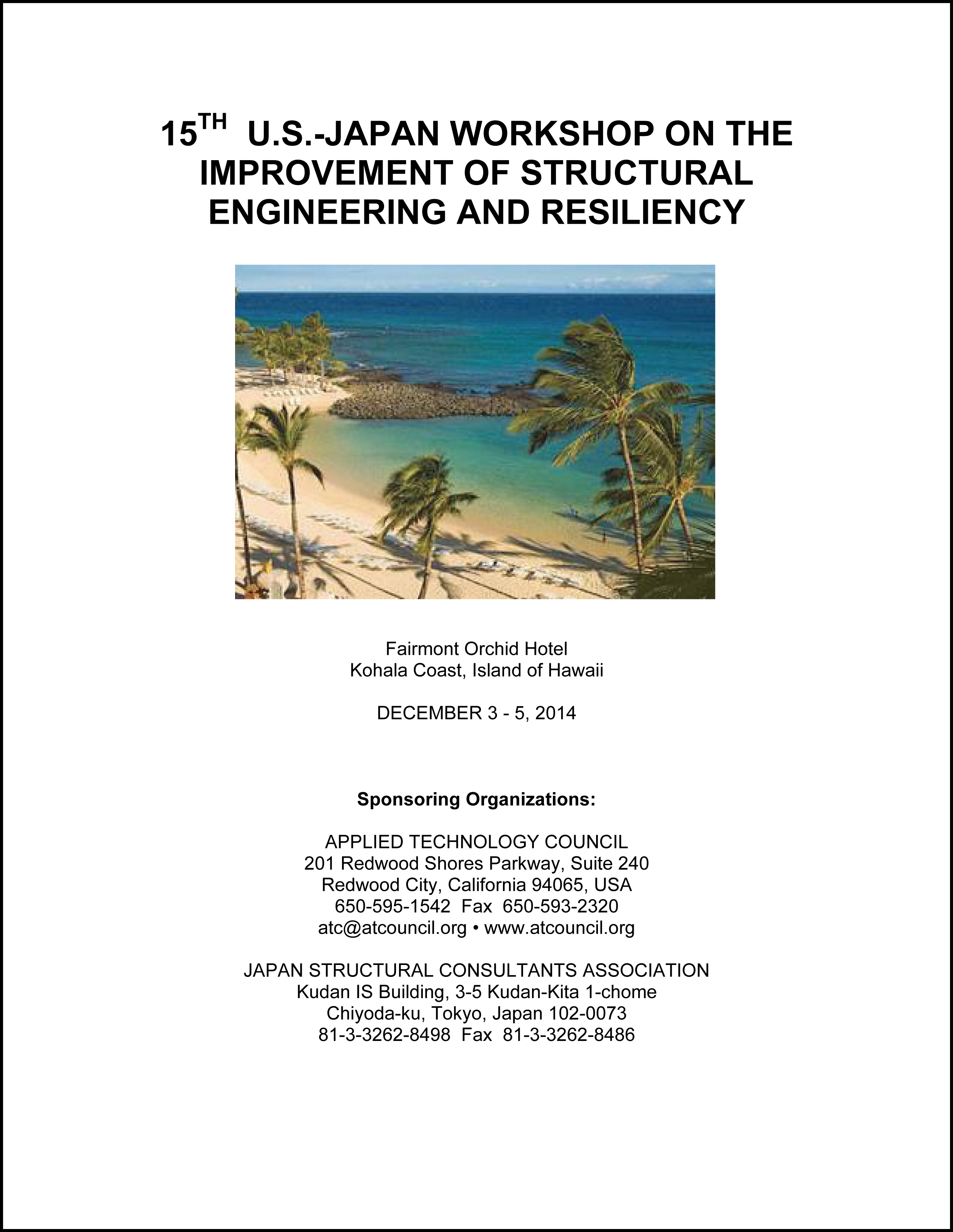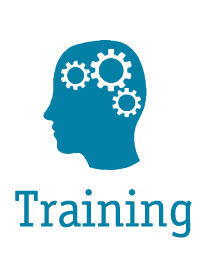PROJECT OVERVIEW
Title: 15th U.S.-Japan Workshop on the Improvement of Structural Engineering and Resiliency
Project Status: This Workshop was conducted on December 3-5, 2014
Sponsors: Applied Technology Council (ATC) and Japan Structural Consultants Association (JSCA)
PROJECT SUMMARY
The Purpose of the Workshop was to develop policy recommendations for improved community resilience based on the current state-of-practice, innovative engineering solutions, and new and emerging technologies. A special focus of the Workshop was on the means to build resiliency, reduce economic losses, and speed recovery and reconstruction following typhoons or hurricanes, earthquakes, and other natural disasters.
The Workshop is the 15th in a series started in 1984, and repeated every two-to-three years. Previous workshops have been held in California (San Diego and San Francisco), Hawaii (Honolulu, Kauai, Kona, Kohala Coast, and Maui), Japan (Kobe and Tokyo), and Victoria, British Columbia.
Workshop Participants. The Workshop Participants included those with a background in building performance and other structures in severe earthquakes, including the effects of tsunami, and response and recovery.
Workshop Program. The Workshop Program was designed for practicing structural engineers and researchers, and included technical presentations, and working group breakout sessions and discussions. Papers and presentations were as follows:
|
Session I: Resiliency-Based Design: Progress and Developments |
|||
|
Paper Number |
Paper Title | Author | Presentation |
|
1. |
Thoughts and Ideas on the Improvement of Structural Engineering and Resilience for Natural Hazards | Alexander Yanev and Peter Yanev* |
View Presentation |
|
2. |
Development of Resilient Reinforced Concrete Building Structure | Seitaro Tajiri*, Hiroshi Fukuyama, and Tomohisa Mukai | View Presentation |
|
3. |
Resilience of Steel Moment-Frame Buildings with Reserve Lateral Strength | Johnn P. Judd* and Finley A. Charney |
View Presentation |
|
4. |
Structural Design of the Seismic Response Controlled Buildings with Robustness | Shinya Nishimoto*, Yozo Shinozaki, Megumi Kawasaki, and Koji Tsuchimoto |
View Presentation |
|
5. |
Utilizing Damping Devices to Improve Resiliency of Structures | Alan Klembczyk* | View Presentation |
|
6. |
Progress on Resilience-Based Seismic Design Supported by Advanced Prediction of Building Damage, Repair Cost, and Building Closure Time | Curt B. Haselton* and Jack W. Baker |
View Presentation |
|
Session II: Performance Based-Design and Response Evaluation of Structures |
|||
|
Paper Number |
Paper Title | Author | Presentation |
|
1. |
A New Framework for Quantifying Ground Motion Intensity to Estimate Collapse Vulnerability of Buildings | Kenny Buyco*, Thomas Heaton, Anna Olsen, John Hall, and Shiyan Song |
View Presentation |
|
2. |
Seismic Response Control of the Building Having Large Space with Dampers | T. Haijima* | View Presentation |
|
3. |
Performance Target Choices by Owners Under ASCE 7-10 and ASCE 41-13: Improving Seismic Resiliency and Reducing Seismic Risk in the Legal Arena |
Mark N. White*, Cynthia L. Perry, Eduardo Fierro, Toyu Yazaki, and Junko Yazaki |
View Presentation |
|
4. |
Resilient Seismic Upgrade of Bay Division Pipeline No. 3 at the Hayward Fault | Changmo Kwon | View Presentation |
|
5. |
Response Reduction Effect of Soil-Structure-Interaction Evaluated by System Identification of Strong Motion Records Observed in 2011 East Japan Earthquake |
Hajime Okano* and Tatsuya Azuhata |
View Presentation |
|
6. |
Seismic Design of Japanese Nuclear Power Plants and Their Actual Response in the July 2007 Chuetsu-oki Earthquake | Akira Wada* and Katsuichiro Hijikata |
View Presentation |
|
Session III: Risk Identification and Reduction: Methods and Validation |
|||
|
Paper Number |
Paper Title |
Author | Presentation |
|
1. |
A Risk Communication Game-Changer: The U.S. Resiliency Council (USRC) Building Rating System |
Jon A. Heintz* | View Presentation |
|
2. |
The ATC-78 Methodology for Evaluation and Mitigation of Nonductile Concrete Buildings | Abbie Liel* | View Presentation |
|
3. |
Performance of Buildings and Nonstructural Components in the South Napa Earthquake | John Gillengerten* | View Presentation |
|
4. |
Modified Displacement-Based Design for Reinforced Masonry Shear Wall Structures | Farhad Ahmadi* | View Presentation |
|
5. |
Presentation on Similar Efforts in Japan | Mitsuru Kawamura* | View Presentation |
Session IV: Multi-Hazard Design, Analysis and Research: Buildings & Critical Infrastructure |
|||
|
Paper Number |
Paper Title |
Author | Presentation |
|
1. |
Multi-Hazard and Resilience Research at Rensselaer |
Franklin T. Lombardo* | View Presentation |
|
2. |
Resiliency of Power Systems in the United States for Earthquakes and Windstorms and Firestorms | John Eidinger* | View Presentation |
|
3. |
Performance of Base Isolated Structure for Tsunami Loading | Mineo Takayama* | View Presentation |
|
4. |
Reliability Analysis of Structures Designed in Accordance with ASCE 7, when Subjected to Tsunami and Earthquake Effects | Gary Chock* and Nico Luco | View Presentation |
|
Session V: Systems and Processes to Improve Emergency Response, Reconstruction, and Recovery |
|||
|
Paper Number |
Paper Title |
Author | Presentation |
|
1. |
Examples of Recovery Proposals and Recovery Process |
Mitsuru Kawamura* | View Presentation |
|
2. |
Measuring lifeline emergency response using temporal network models | Gian Paolo Cimellaro* | View Presentation |
|
3. |
Development of an Open Source Structural Health Monitoring and Damage Detection System for Sustainable and Resilient Structures | Erol Kalkan*, Jon P. Fletcher, Lawrence Baker, Paul Friberg, and William Leith | View Presentation |
|
4. |
Improving Community Resilience Through Public-Private Partnership: The BORP Strategy | Matthew Bogaard* | View Presentation |
|
5. |
What is needed for resiliency of tall buildings in San Francisco and elsewhere? | Mehmet Çelebi* | View Presentation |
|
Session VI: Humanitarian Engineering: The Role of Engineering and Technology in Less-Developed Communities |
|||
|
Paper Number |
Paper Title |
Author | Presentation |
|
1. |
Improving Earthquake Resiliency in Developing Cities |
Hideki Kit Miyamoto* | View Presentation |
|
2. |
‘Ductility’ is ‘Damage’, People Don’t Want to Live in Damaged Buildings | Akira Wada* | View Presentation |
|
3. |
Saving Lives through Humanitarian Engineering | Sabine Kast* | View Presentation |
|
4. |
An Example of Improving Earthquake Safety Project in South-east Asia | Takayuki Teramoto* | View Presentation |
|
5. |
Effectively Adapting and Adopting Risk Reduction Technologies in Emerging Communities | Verónica Cedillos* | View Presentation |
|
Session VII: Closing Session |
|||
|
Paper Number |
Paper Title | Author | Presentation |
|
1. |
Special Presentation: Personal Message to Participants from Roland Sharpe—U.S. Founder of the U.S.-Japan Workshop series | Roland Sharpe (presented by Christopher Rojahn) | View Presentation |
|
2. |
Summary and Conclusions | Mitsuru Kawamura*, Christopher Rojahn*, Kit Miyamoto* | View Presentation |
*Presenting Author.




